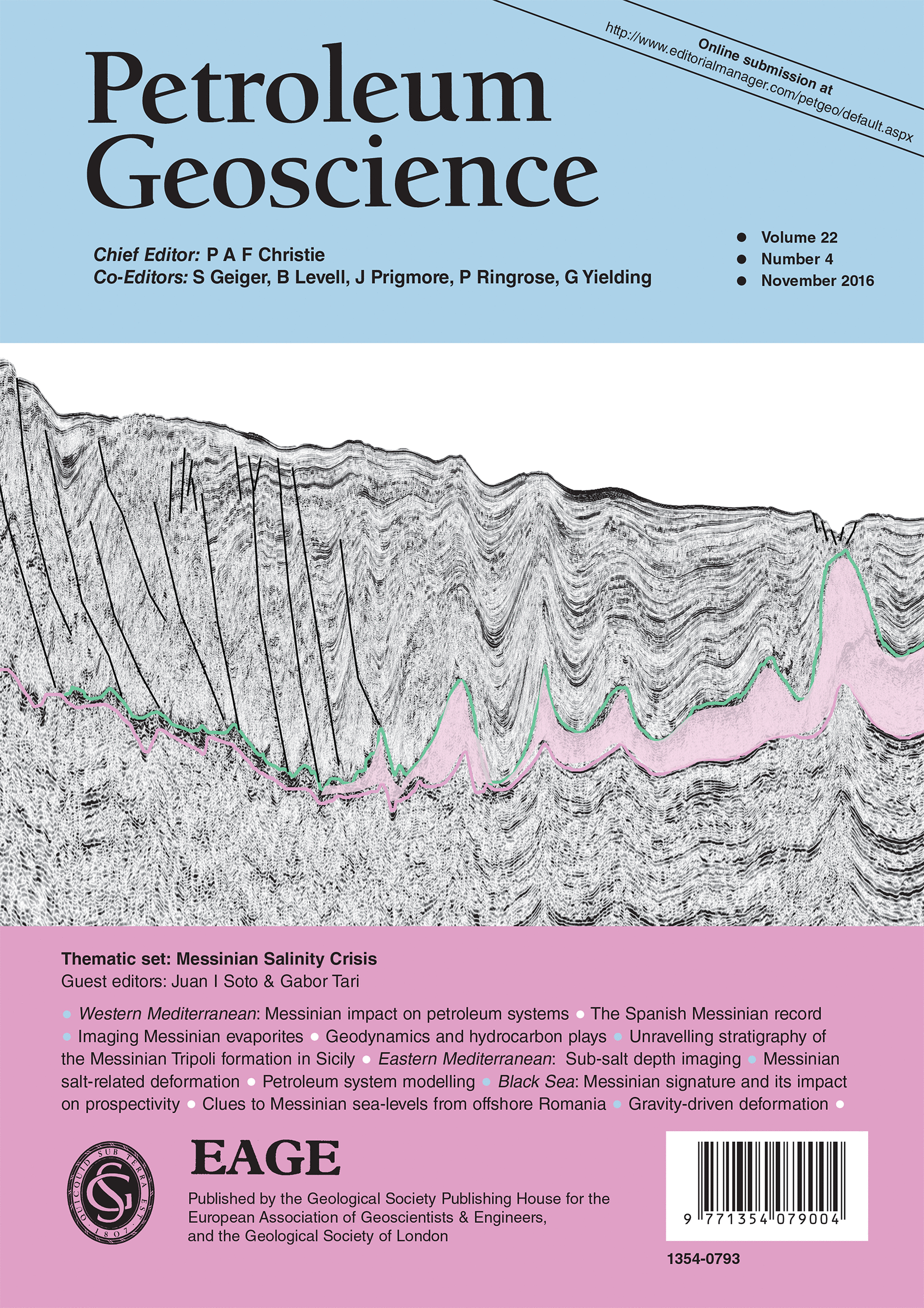
Full text loading...
The offshore Levant Basin demonstrates one of the most phenomenal natural examples of a working petroleum system associated with a relatively rapid unloading and loading cycle caused by the Messinian salinity crisis (MSC). In this study, 2D basin and petroleum systems modelling suggests that the geologically instantaneous water unloading of approximately 2070 m, and subsequent rapid salt deposition and refill, impact the subsurface pore pressure and temperature in the underlying sediments. The pressure drop is modelled to be instantaneous, whereas the impact on temperature is more of a transient response. This has important consequences for the shallow sub-Messinian biogenic petroleum system, which is assumed to have experienced fluid brecciation associated with massive fluid escape events. Deeper Oligo-Miocene sediments are far less affected, thus indicating a ‘preservation window’ for biogenic gas accumulations, which host the recent discoveries (Tamar, Leviathan, Aphrodite). Hydrocarbon accumulations of a ‘bubblepoint oil’ composition are modelled to have experienced cap expansion during the drawdown, with the pressure drop being the primary control. This study suggests that seal-limited traps are expected to have undergone a catastrophic seal failure, whereas the impact of the MSC is modelled to be less destructive for size-limited and, particularly, charge-limited traps.

Article metrics loading...

Full text loading...
References


Data & Media loading...

